Ditching network TV and getting rid of your cable bill is a big step. But if you've got the right HDTV antenna, it will make the process that much easier. The thing is, you've got endless options to pick from, and with new HDTV antennas coming out all the time, things can feel even more complicated.
We've spent a lot of time reviewing how well HDTV antennas work, and along with recommending products like the Mohu Releaf, we've collected all the best HDTV antennas for you. Additionally, every antenna on this list will support the incoming ATSC 3.0 standard that's expected to revolutionize antenna-based TV for the forseeable future.
Editor's note: Not everyone lives in a neighborhood ripe for antenna viewing, so we recommend taking a look at TV Fool's TV Signal Analysis tool or a similar site to find out which channels are available in your area before you buy.Best HDTV antennas a glance
The best overall
Mohu Releaf

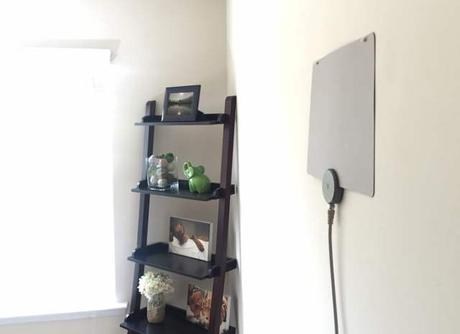
Why you should buy this: You're looking for a future-proofed, eco-friendly product.
Who it's for: The eco-minded cord cutter.
Why we picked the Mohu Releaf:This eco-friendly antenna is unlike most other antennas on this list because it's made from recycled, "post-consumer" cardboard and chlorine-free colors, as is the packaging it comes in. It is also devoid of any paper instructions, which are instead printed on the packaging to eliminate excess waste. The cables and minimal plastic components are made with Mohu's "MohuGrind" plastic, composed of crushed and ground-up recycled cable boxes (take that, cable companies). Just to go the extra mile, all of these components are crafted using renewable energy, and the Mohu smartly eliminates waste by printing instructions and other information within the shipping box.
It's great to be earth conscious, of course, but the Mohu Releaf is also a great antenna. It's also one of the few examples to advertise 4K support, though this is really just marketing-speak. As we've mentioned this entire list is full of ATSC 3.0-supported antennas. That said, you may need a few other products to prepared for the new standard.
The best flat antenna
ClearStream Eclipse
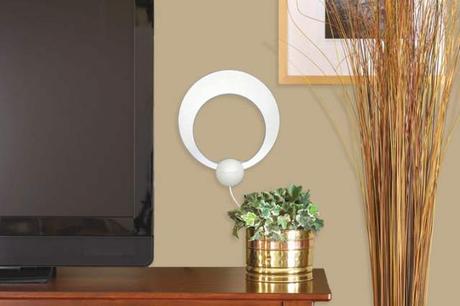
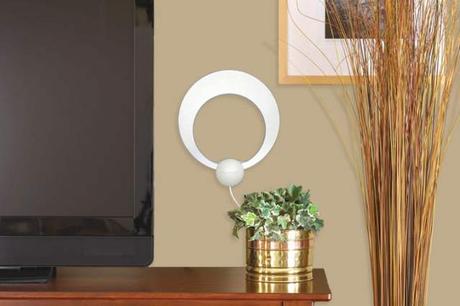
Why you should buy this: It's a discreet yet powerful antenna with a novel design.
Who it's for: Those who don't mind paying a little extra for performance.
Why we picked the ClearStream Eclipse:The ClearStream Eclipse offers top-rated performance when it comes to flat, multi-directional HD antennas. This is true of all four available Eclipse models, which come in estimated signal ranges, from 35 miles up to 70. The antenna is two-sided - a black side and a white side - to match your decor. Not only is the material adhesive on both sides (meaning no tape), but it also can be painted over, so it can easily become a discreet addition to any room.
Even better, the multidirectional nature of the ClearStream Eclipse means it can be mounted virtually anywhere and doesn't require precise aiming to catch a signal. Unlike many indoor antennas, most of which use a square or rectangular design, the circular design of the ClearStream Eclipse is better at picking up UHF signals, which can be a struggle for many indoor antennas. Those specs make it a great choice for those ready to ditch cable, regardless of where you live.
The best amplified antenna
Mohu Curve Amplified


Why you should buy this: The Mohu Curve hides in plain sight while offering excellent reception.
Who it's for: Those as concerned about decor as performance.
Why we picked the Mohu Curve Amplified:If inconspicuous and discreet locations are hard to come by in your residence, you might as well opt for a good-looking antenna. Enter Mohu's Curve lineup, with antennas that look as good as they perform. This free-standing antenna can sit on tables, entertainment centers, or shelves without drawing much attention. The curved design is simple and attractive, and the fact that the antenna doesn't require mounting means it can be moved to wherever the signal comes in best. An included 10-foot coaxial cable aids in placement flexibility. Throw in an OTA DVR, and you're likely to question why you ever paid for cable in the first place.
The best tiny antenna
Leaf Metro
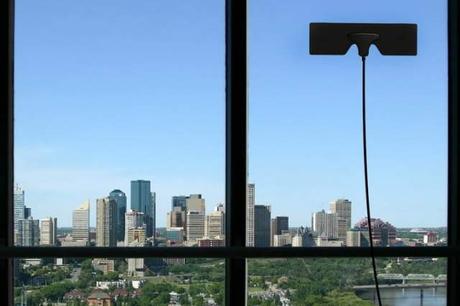
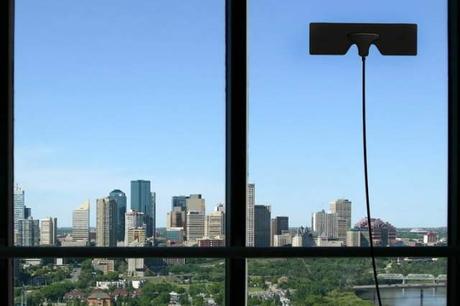
Why you should buy this: The Leaf Metro is the smallest antenna of the bunch, but it's no less capable of providing quality HDTV signals.
Who it's for: City apartment dwellers who need something compact.
Why we picked the Leaf Metro:Though admittedly weaker than Mohu's larger Leaf antenna, the Leaf Metro antenna is the perfect fit for compact living spaces. Mohu designed the Leaf Metro for discreet installation in homes located close to broadcast towers. As such, those living in downtown or urban areas are most likely to get the best results from the Leaf Metro, which has a range of approximately 25 miles.
To compound the versatility enabled by its tiny size, the Leaf Metro antenna also comes in either black or white, so users have the ability to paint it to match their interior. Plus, its adhesive coating means it'll stick to almost any surface and can be moved to other locations with ease. An included 10-foot coaxial cable allows for fairly flexible installation.
The best indoor/outdoor antenna
Clearstream 2Max HDTV Antenna

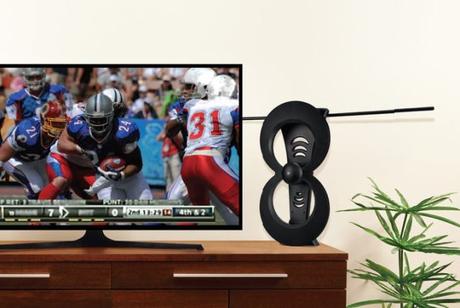
Why you should buy this: It delivers long-distance reception, even in less than ideal environments.
Who it's for: Those who live a long distance from signal sources.
Why we picked the Clearstream 2Max HDTV Antenna:Despite the Clearstream 2Max's somewhat complicated design, the antenna is actually quite simple to assemble, using either clamps or a base for installation. Though the antenna is larger than most every other antenna listed here, it's not so big that it can't fit behind a TV or mount to the wall of your living room. For outdoor installation, a 20-inch mast is included.
While we're recommending the 2Max model with 60-mile reception, if you live way out in the boonies, it may also be worthwhile to look into the larger and pricier 4Max version of the antenna, which features a 70-mile reception range and (some say) more reliable connection. Similarly, if you live closer to a signal, the 1max, which has a 40-mile range, is also a good option.
With such a range of options available in the Clearstream Max line, it shouldn't be too difficult to find a great way to get free HD TV in the countryside.
The best outdoor antenna
Winegard Elite 7550
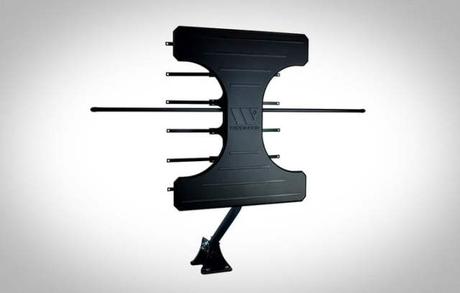
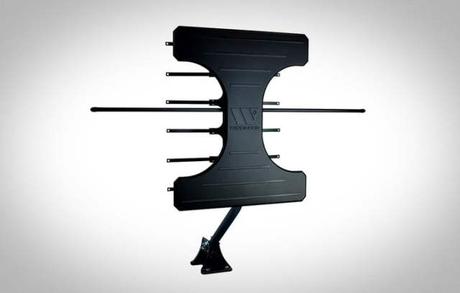
Why you should buy this: Your home falls outside the reception range of the most powerful indoor antenna on our list.
Who it's for: Those for whom an indoor antenna simply won't cut it.
Why we picked the Elite 7550:For most users, an indoor HDTV antenna will nab the channels you desire. There are some spots, however, where only an outdoor antenna will do the job. With a reception range of over 70 miles (sometimes more depending on your location), Winegard's Elite 7550 provides incredible performance and impressive signal quality. That comes thanks in part to Winegard's proprietary TwinAmp technology, which amplifies VHF and UHF (the two different types of OTA signals) separately and with less noise than other amplified antenna models. Keep in mind, amplified antennas come with an in-line signal amplifier that requires power, so you'll have to find a spot somewhere between the antenna and the TV or receiver to plug it into a wall outlet or power strip.
It's smaller and lighter than many outdoor models, making it easy to find the proper location for mounting, and also supports multiple connected TVs at once - you'll just need to supply the splitter yourself. With an outdoor antenna like this, you'll have one less device to worry about in your home theater.
How we test
The majority of these picks were tested in our downtown Portland, OR offices, as well as in residential locations to get the best possible impression on the signal strength of each antenna. We then cross-referenced our findings with those of other experts and consumers to assess any differences and gauge the relevance of inconsistencies (if there were any to begin with) for our final rankings. For the few choices on this list, we did not get hands-on time with, we based our appraisal on the opinions of fellow tech publications, expert outlets, and user comments.
Where's 4K?
Though all of the products we've highlighted will support the 4K-ready ATSC 3.0 standard, 4K broadcasts aren't ready just yet. Expect that to change very soon, however. ATSC is currently available in a limited number of markets, and the larger rollout will limit content to HD only. There is hope, though, of ATSC 3.0 offering 1080p 60 HD with HDR later in 2020.
A word on signal strength and qualityWe'd love to tell you there's an ideal location in your home in relation to a signal tower, but the truth is there isn't. In reality, like so many other things in life, the process of finding the best spot for an antenna requires trial-and-error, some finesse, and maybe even a little luck. This inconsistency is true not just of different geographical regions, but in variations between antenna models. What may be the best location for one antenna may not be as effective for others.
Further, there are differences in the signal types that your antenna will be picking up, and some antennas may be better at picking up certain signal frequencies than others. The two main signal types are VHF and UHF. The basic difference between the two is the channels broadcast in those frequencies. Channels 2-13 are broadcast in VHF, while channels 14-51 are UHF. Most antennas can pick up both VHF and UHF, but some can only pick up one or the other. This will be noted in an antenna's product description.
Also important to note is that a channel's number doesn't always correspond to that channel's actual broadcast frequency. This exception doesn't typically apply unless you're pairing your HD antenna with a third-party interface, such as a DVR OTA receiver. Tablo, for instance, lists CBS 6 in Richmond, Virginia, on its channel 6 slot, which you would think requires a VHF antenna, but the content actually comes in over the UHF-bound channel 25. This should be a non-issue in most instances, but keep this outlier situation in mind if you ever run into any issues.
Otherwise, here are some general tips to ensure the best possible reception.
- Face your antennas directly toward the nearest towers, if possible. Some antennas are omnidirectional - meaning the orientation of their placement won't dampen matters much - but you should try and get it as close into the tower's general direction within your house as possible.
- Place your antenna with as minimal geographical interference (mountains, hills, trees, buildings, etc) as possible.
- Buy an amplified antenna if you find yourself afflicted by the issues above. They're a bit costlier, but they typically perform better in less-than-ideal conditions, and they'll save you time (and sanity) in the long run.
Try to keep interference from radios, cell phones, or other electronics to a minimum. This doesn't necessarily mean keep the antenna away from your TV. In some instances, however, the best location for an antenna may well be directly behind or under the TV.
In general, the ranges listed by manufacturers are estimates and shouldn't be taken at face value. While it's still best to opt for an antenna listed with longer reception ranges for locations far from broadcast towers, there are no universal testing criteria for establishing what an antenna's operating range is. Plus, environmental factors will impact accuracy.
Finally, while we have recommendations for amplified antennas, we aren't entirely sold on the efficacy of that technology. Despite the name, "amplified" antennas or in-line amplifiers do not boost the signal reception itself. Rather, they strengthen the signal that is being picked up, meaning if you're getting a slightly fuzzy signal, the amplifier will try to artificially boost the quality on the TV. We've had varying degrees of success there, but in general there often isn't going to be an appreciable change in quality. It's also important to note that amplifiers should not be used in areas where signal strength is stable. This can cause noise and other picture quality problems.
